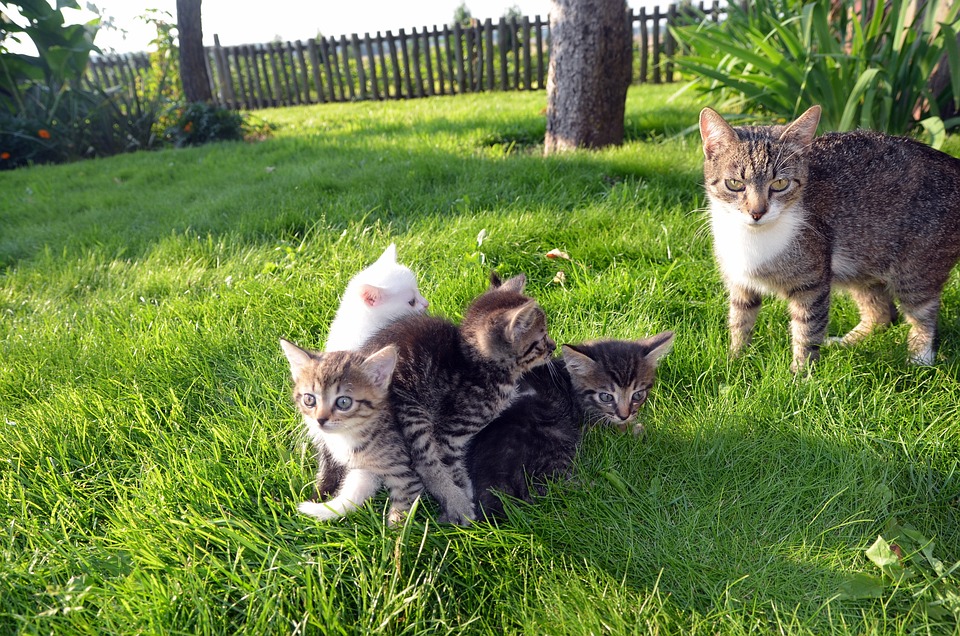
Introduction
Welcoming a new kitten into your home is an exciting and joyful experience. However, as adorable as they are, kittens require proper training to thrive in their new environment. One of the essential tasks for any cat owner is litter training. Fortunately, kittens are naturally inclined to use a litter box, and with the right approach, you can teach them quickly and effectively. This comprehensive guide will provide simple steps and practical advice to successfully litter train your kitten, ensuring a clean and happy home for both you and your feline friend.
Understanding Your Kitten’s Natural Instincts
Kittens, like their wild ancestors, have an inherent instinct to bury their waste. This behavior is a survival mechanism to hide their scent from predators. By providing a clean and accessible litter box, you’ll be encouraging your kitten to follow its natural instincts. Understanding these instincts is the first step in successful litter training.
The Right Time to Start
Kittens can start litter training as early as three to four weeks old, as this is when they begin to explore their surroundings and become more independent from their mother. By the time they are eight weeks old and ready to join your household, they should be ready to start using a litter box.
Choosing the Right Litter Box
Selecting the appropriate litter box is crucial for successful litter training. Here are some factors to consider:
Size and Accessibility
Choose a litter box that is the right size for your kitten. A box that is too large may be intimidating, while one that is too small can be restrictive. Look for a box with low sides to make it easy for your kitten to enter and exit.
Type of Litter
There are various types of litter available, including clumping, non-clumping, clay, silica gel, and biodegradable options. Choose a litter that is unscented and dust-free to avoid irritation to your kitten’s sensitive nose and respiratory system. Clumping litter is often preferred as it makes cleaning easier.
Number of Litter Boxes
It’s a good idea to have one more litter box than the number of cats in your home. For a single kitten, two litter boxes placed in different locations can prevent accidents and offer your kitten options.
Setting Up the Litter Box
Proper setup of the litter box area is essential for encouraging your kitten to use it consistently.
Location
Place the litter box in a quiet, low-traffic area where your kitten can have some privacy. Avoid placing it near their food and water bowls, as cats instinctively separate their eating and elimination areas.
Introducing Your Kitten to the Litter Box
When you first bring your kitten home, show them where the litter box is located. Gently place them in the box to familiarize them with its presence. You may need to do this several times until your kitten starts using it independently.
Encouraging Good Habits
Consistency and positive reinforcement are key to successful litter training.
Establishing a Routine
Encourage your kitten to use the litter box after meals, playtime, and naps. This helps establish a routine and reinforces the habit of using the litter box.
Positive Reinforcement
Praise and reward your kitten when they use the litter box correctly. Verbal praise, gentle petting, or a small treat can reinforce the desired behavior and make your kitten more likely to continue using the litter box.
Handling Accidents
Accidents are a common part of the litter training process. If your kitten has an accident outside the litter box, remain calm and avoid punishment. Clean the area thoroughly with an enzymatic cleaner to remove any lingering scent that may attract them back to the spot. Redirect your kitten to the litter box and encourage them to use it instead.
Troubleshooting Common Issues
Even with the best efforts, some kittens may experience challenges with litter training. Here are solutions to some common problems:
Litter Box Aversion
If your kitten avoids the litter box, consider the following factors:
- Check for any changes in the environment that may have caused stress or anxiety.
- Ensure the litter box is clean and free from strong odors.
- Experiment with different types of litter to find one your kitten prefers.
Medical Concerns
If your kitten suddenly stops using the litter box, consult with your veterinarian to rule out any medical issues such as urinary tract infections or digestive problems.
Multiple Cats
In a multi-cat household, ensure each cat has its own litter box to prevent territorial disputes and encourage consistent usage.
Maintaining a Clean Litter Box
Regular maintenance of the litter box is crucial for ensuring your kitten continues to use it:
Daily Cleaning
Scoop the litter box at least once a day to remove waste. Regular cleaning prevents odor buildup and keeps the box inviting for your kitten.
Weekly Cleaning
Perform a thorough cleaning of the litter box weekly. Empty all the litter, wash the box with mild soap and water, and refill it with fresh litter. This helps prevent bacteria growth and maintains a hygienic environment for your kitten.
Conclusion
Litter training your kitten is a rewarding process that requires patience, consistency, and understanding. By following these simple steps and addressing any challenges that arise, you’ll be well on your way to having a well-trained and happy kitten. Remember that each kitten is unique, and some may take longer to learn than others. With love and dedication, your kitten will soon master the art of using the litter box, ensuring a harmonious and clean home for everyone involved.
#ChatGPT assisted in the creation of this article.








